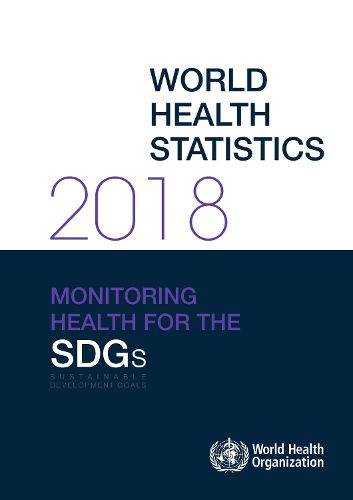Readings Newsletter
Become a Readings Member to make your shopping experience even easier.
Sign in or sign up for free!
You’re not far away from qualifying for FREE standard shipping within Australia
You’ve qualified for FREE standard shipping within Australia
The cart is loading…






The World Health Statistics series is WHO’s annual compilation of health statistics for its 194 Member States. The series is produced by the WHO Department of Information, Evidence and Research, of the Health Metrics andMeasurement Cluster, in collaboration with all relevant WHO technical departments. World health statistics 2018 focuses on the health and health-related Sustainable Development Goals (SDGs) and associated targets by bringing together data on a wide range of health-related SDG indicators. It also links to the three SDG-aligned strategic priorities of the WHO’s 13th General Programme of Work, 2019-2023. World health statistics 2018 is organised into three parts. First, in order to improve understanding and interpretation of the data presented, Part 1 outlines the different types of data used and provides an overview of their compilation, processing and analysis. The resulting statistics are then publicised by WHO through its flagship products such as the World Health Statistics series. In Part 2 summaries are provided of the current status of selected health-related SDG indicators at global and regional levels, based on data available as of early 2018. As indicated above, World health statistics 2018links to the SDG-aligned strategic priorities of the WHO’s 13th General Programme of Work. In Part 3, each of these three strategic priorities of achieving universal health coverage (UHC), addressing health emergencies and promoting healthier populations are illustrated through the use of highlight stories. In Annexes A and B, country-level statistics are presented for selected health-related SDG indicators. Additionally, Annex B also presents statistics at WHO regional and global levels. For the first time, the type of data used for each indicator ( comparable estimate ; primary data ; or other data ), as described in Part 1, is also shown.The statistics presented in World health statistics 2018 are official WHO statistics based on data available for global monitoring in early 2018, and all comparable estimates have been consulted with Member States. The statistics have been compiled primarily using publications and databases produced and maintained by WHO or by United Nations groups of which WHO is a member, such as the United Nations Inter-agency Group for Child Mortality Estimation (UN-IGME). Additionally, a number of statistics have been derived from data produced and maintained by other international organisations, such as the United Nations Department of Economic and Social Affairs and its Population Division.
$9.00 standard shipping within Australia
FREE standard shipping within Australia for orders over $100.00
Express & International shipping calculated at checkout
The World Health Statistics series is WHO’s annual compilation of health statistics for its 194 Member States. The series is produced by the WHO Department of Information, Evidence and Research, of the Health Metrics andMeasurement Cluster, in collaboration with all relevant WHO technical departments. World health statistics 2018 focuses on the health and health-related Sustainable Development Goals (SDGs) and associated targets by bringing together data on a wide range of health-related SDG indicators. It also links to the three SDG-aligned strategic priorities of the WHO’s 13th General Programme of Work, 2019-2023. World health statistics 2018 is organised into three parts. First, in order to improve understanding and interpretation of the data presented, Part 1 outlines the different types of data used and provides an overview of their compilation, processing and analysis. The resulting statistics are then publicised by WHO through its flagship products such as the World Health Statistics series. In Part 2 summaries are provided of the current status of selected health-related SDG indicators at global and regional levels, based on data available as of early 2018. As indicated above, World health statistics 2018links to the SDG-aligned strategic priorities of the WHO’s 13th General Programme of Work. In Part 3, each of these three strategic priorities of achieving universal health coverage (UHC), addressing health emergencies and promoting healthier populations are illustrated through the use of highlight stories. In Annexes A and B, country-level statistics are presented for selected health-related SDG indicators. Additionally, Annex B also presents statistics at WHO regional and global levels. For the first time, the type of data used for each indicator ( comparable estimate ; primary data ; or other data ), as described in Part 1, is also shown.The statistics presented in World health statistics 2018 are official WHO statistics based on data available for global monitoring in early 2018, and all comparable estimates have been consulted with Member States. The statistics have been compiled primarily using publications and databases produced and maintained by WHO or by United Nations groups of which WHO is a member, such as the United Nations Inter-agency Group for Child Mortality Estimation (UN-IGME). Additionally, a number of statistics have been derived from data produced and maintained by other international organisations, such as the United Nations Department of Economic and Social Affairs and its Population Division.